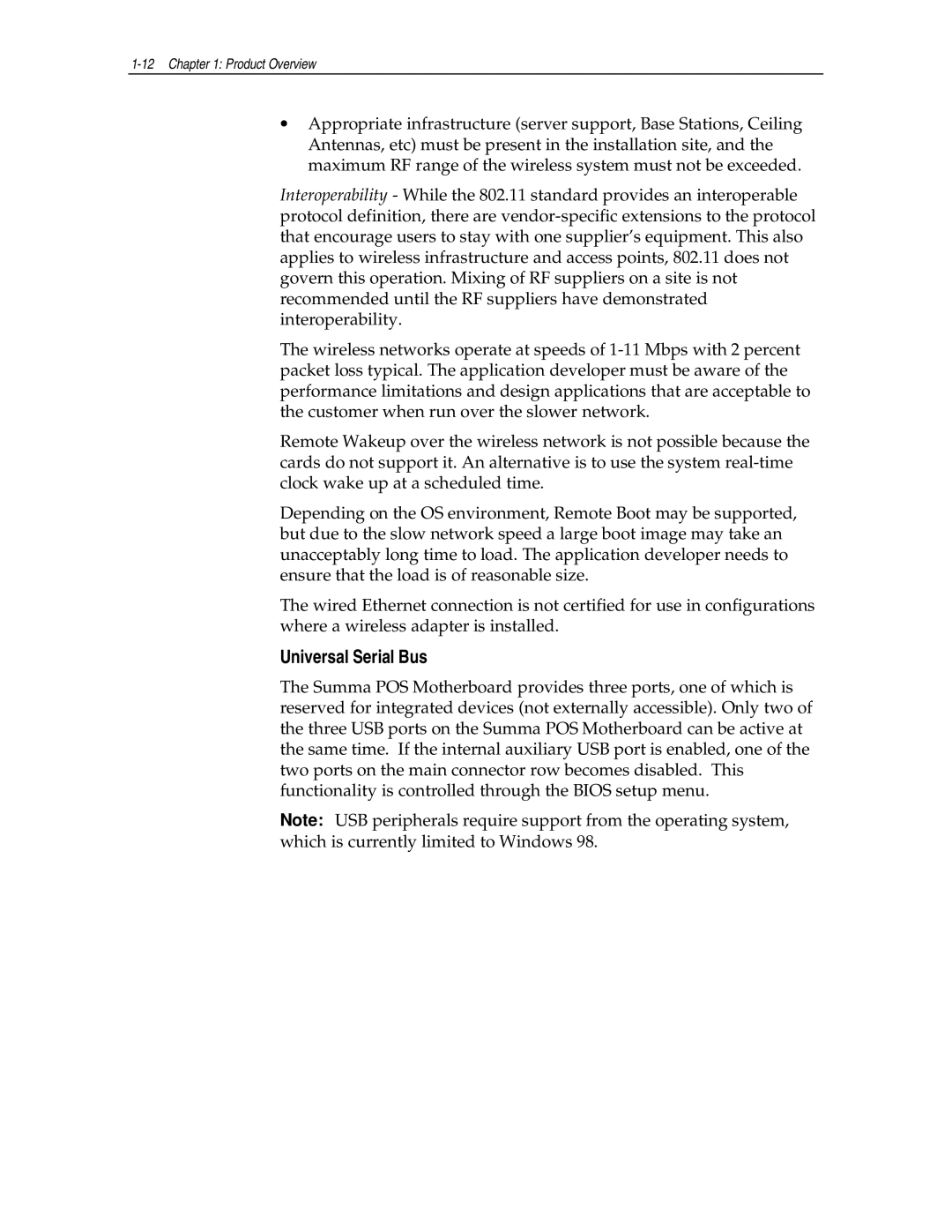•Appropriate infrastructure (server support, Base Stations, Ceiling Antennas, etc) must be present in the installation site, and the maximum RF range of the wireless system must not be exceeded.
Interoperability - While the 802.11 standard provides an interoperable protocol definition, there are
The wireless networks operate at speeds of
Remote Wakeup over the wireless network is not possible because the cards do not support it. An alternative is to use the system
Depending on the OS environment, Remote Boot may be supported, but due to the slow network speed a large boot image may take an unacceptably long time to load. The application developer needs to ensure that the load is of reasonable size.
The wired Ethernet connection is not certified for use in configurations where a wireless adapter is installed.
Universal Serial Bus
The Summa POS Motherboard provides three ports, one of which is reserved for integrated devices (not externally accessible). Only two of the three USB ports on the Summa POS Motherboard can be active at the same time. If the internal auxiliary USB port is enabled, one of the two ports on the main connector row becomes disabled. This functionality is controlled through the BIOS setup menu.
Note: USB peripherals require support from the operating system, which is currently limited to Windows 98.
